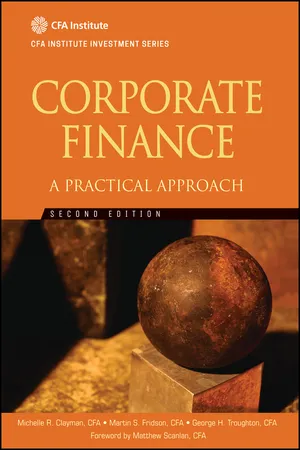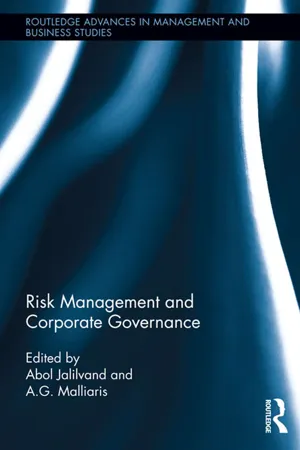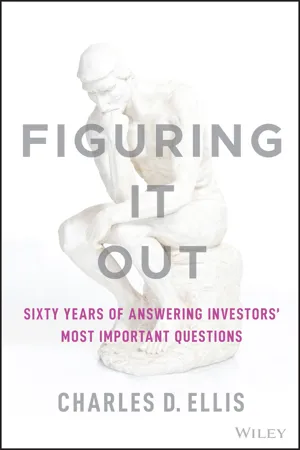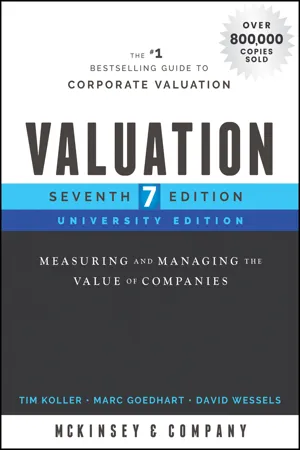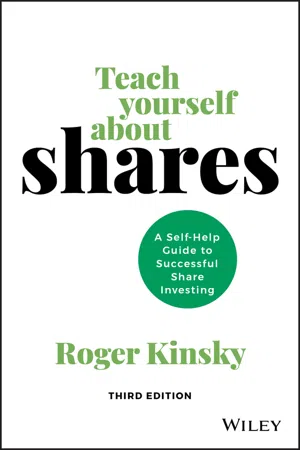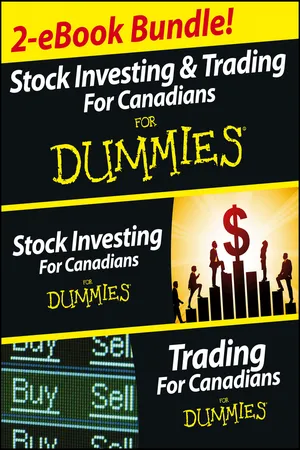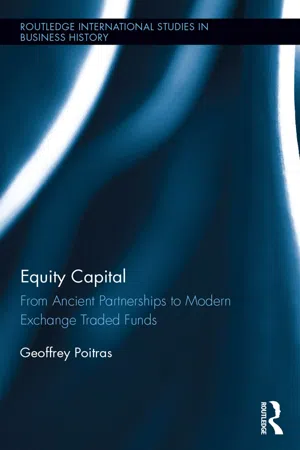Business
Share Repurchase
Share repurchase, also known as stock buyback, is when a company buys back its own shares from the open market. This reduces the number of outstanding shares, which can increase the value of the remaining shares and improve earnings per share. Share repurchases are often seen as a way for companies to return value to shareholders and signal confidence in the company's future.
Written by Perlego with AI-assistance
Related key terms
Related key terms
1 of 4
Related key terms
1 of 3
12 Key excerpts on "Share Repurchase"
- eBook - ePub
Corporate Finance
A Practical Approach
- Michelle R. Clayman, Martin S. Fridson, George H. Troughton(Authors)
- 2012(Publication Date)
- Wiley(Publisher)
Share Repurchase Methods Following are the four main ways that companies repurchase shares, listed in order of importance. 1. Buy in the open market. This method of Share Repurchase is the most common, with the company buying its own shares as conditions warrant in the open market. Theopen market Share Repurchase method gives the company maximum flexibility. Open market repurchases are the most flexible option for a company because there is no legal obligation to undertake or complete the repurchase program—a company may not follow through with an announced program for various reasons, such as unexpected cash needs for liquidity, acquisitions, or capital expenditures. In the United States, open market transactions do not require shareholder approval. Because shareholder approval is required in Europe, Vermaelen (2005) suggested that all companies have such authorization in place in case the opportunity to buy back undervalued shares occurs in the future. 20 Authorizations to repurchase stock can last for years. In many shareholders’ minds, the announcement of a repurchase policy provides support for the share price. If the Share Repurchases are competently timed to minimize price impact and to exploit perceived undervaluation in the marketplace, this method is also relatively cost effective. 2. Buy back a fixed number of shares at a fixed price. Sometimes a company will make a fixed price tender offer to repurchase a specific number of shares at a fixed price that is typically at a premium to the current market price. For example, in Australia, if a stock is selling at A$37 a share, a company might offer to buy back 5 million shares from current shareholders at A$40. If shareholders are willing to sell more than 5 million shares, the company will typically buy back a pro rata amount from each shareholder - eBook - ePub
- Abol Jalilvand, Tassos Malliaris, Abol Jalilvand, Tassos Malliaris(Authors)
- 2013(Publication Date)
- Routledge(Publisher)
Furthermore, the fact that companies are not legally required to announce their intention to repurchase stock presents another viable and convincing argument that strengthens the credibility of information signaling as a motive for managers to implement Share Repurchase programs. Firms may repurchase shares of their own stock in the open market at any time without publically announcing their intention to do so. Virtually all Share Repurchase programs, however, are accompanied by widely proliferated and costly public announcements. These public announcements suggest that repurchasing firms desire the public to know of their intention to repurchase shares and represent a concerted effort by management to intentionally communicate positive asymmetrical information about their company's future profits, cash flows, and viability to which the market is not currently privy.Several studies, such as the one conducted by Grullon and Michaely (2004), have recently been unable to statistically demonstrate any evidence that repurchasing firms actually achieve appreciably increased stock returns and profitability in the several years following the implementation of a repurchase program. Some studies have actually demonstrated that the profitability and stock returns of repurchasing companies in several industries actually decline in periods subsequent to a stock repurchase.29 These conflicting findings suggest that even though information signaling is often cited by company managers as a reason for implementing a Share Repurchase program, it is far from the primary factor motivating managers to buy back stock.Bondholder Value Expropriation Hypothesis
Stock repurchases expropriate value from bondholders in several ways. First, repurchasing stock reduces the assets of the company, and therefore the value of the claims of bondholders. Unexpected Share Repurchase programs that were not anticipated by the market result in a decline in the value of outstanding bonds as the reduced level of company assets is factored into the price of the bonds. When this unexpected value expropriation occurs, wealth is transferred directly from bondholders to equity holders whose shares enjoy an increase in price and a larger proportional ownership stake in the profits and future cash flows of the repurchasing company after the announcement of the repurchase program. - eBook - ePub
Figuring It Out
Sixty Years of Answering Investors' Most Important Questions
- Charles D. Ellis(Author)
- 2022(Publication Date)
- Wiley(Publisher)
1 Usually, however, repurchase has been viewed only as a defensive device to avoid dilution. Various reasons are given to justify expenditures on a reacquisition of shares. For instance, it is argued that repurchase will:- Avoid diluting earnings per share when stock options are granted and exercised by management.
- Supply shares for employee stock-purchase programs.
- Obtain shares for common stock bonuses to employees.
- Provide shares for stock dividends.
- Avoid diluting earnings per share when convertible securities are changed into common stock.
- Increase the per-share asset value of investment companies when shares sell at a discount in the market.
- Eliminate small odd-lot holdings, which are inordinately costly to service.
- Compensate for the dilution of earnings per share which is incurred in a merger through exchange of shares.
- Provide the means to acquire other companies. (It is ironic that many companies are proud of their policy of making acquisitions only with cash, “to avoid equity dilution.” Yet, because of the federal tax on capital gains in a cash sale, sellers fare better with exchanges of stock than cash payments and will usually accept a proportionately lower purchase valuation when these taxes can be avoided. For example, assuming a 25% capital gains tax on a cash transaction, and assuming the stock alternative qualifies as nontaxable, $100 in stock may be worth $133 in cash to the seller. Consequently, the acquiring company's stockholders' equity would be far less “diluted” if payment were made in shares previously acquired for this purpose in the open market for only three-quarters of the money needed for a cash transaction.)
Repurchase programs which are undertaken for the foregoing reasons occasionally result in a sizable volume of trading. For instance, General Motors' repurchases in 1964 amounted to 1,136,457 shares—or 10.5% of the volume in this stock on the New York Stock Exchange. As a rule, however, such reacquisitions do not lead to significant changes in the number of outstanding shares because purchasing is done specifically for reissue. In a recent study, Barron's found only 100 companies (out of several thousand listed on the major stock exchanges) with more than nominal holdings of their own stock; even in this group most companies were found to hold less than 3% of their total stock and were simply anticipating employee stock options and other similar programs.2 - (Author)
- 2019(Publication Date)
- Wiley(Publisher)
Share Repurchases, or buybacks, most often occur in the open market. Alternatively, tender offers occur at a fixed price or at a price range through a Dutch auction. Shareholders who do not tender increase their relative position in the company. Direct negotiations with major shareholders to get them to sell their positions are less common because they could destroy value for remaining stockholders.Share Repurchases made with excess cash have the potential to increase earnings per share, whereas Share Repurchases made with borrowed funds can increase, decrease, or not affect earnings per share, depending on the company’s after-tax borrowing rate and earnings yield.- A Share Repurchase is equivalent to the payment of a cash dividend of equal amount in its effect on total shareholders’ wealth, all other things being equal.
- If the buyback market price per share is greater (less) than the book value per share, then the book value per share will decrease (increase).
Companies can repurchase shares in lieu of increasing cash dividends. Share Repurchases usually offer company management more flexibility than cash dividends by not establishing the expectation that a particular level of cash distribution will be maintained.Companies can pay regular cash dividends supplemented by Share Repurchases. In years of extraordinary increases in earnings, Share Repurchases can substitute for special cash dividends.On the one hand, Share Repurchases can signal that company officials think their shares are undervalued. On the other hand, Share Repurchases could send a negative signal that the company has few positive NPV opportunities.- eBook - ePub
Valuation
Measuring and Managing the Value of Companies
- Tim Koller, Marc Goedhart, David Wessels(Authors)
- 2020(Publication Date)
- Wiley(Publisher)
36 However, these results were mostly driven by share price increases for smaller companies. In addition, repurchases have become a regular payout instrument, so that their signaling effect has declined over the years.These signaling effects should not be confused with value creation for shareholders, as they only reflect higher market expectations of future performance. If the company does not deliver against these higher expectations, the share price will come down again. As is the case for all cash payouts to shareholders, repurchases do not create value for shareholders, because they do not increase the company’s cash flows from operations. This is confirmed by empirical evidence that earnings multiples are not related to the amount or the form of the cash returns, whether in dividends or via share buybacks (see Exhibit 33.12 ).37Source: Corporate Performance Analytics by McKinsey.Exhibit 33.12Valuation Unrelated to Payout Level or Payout MixNevertheless, two myths about Share Repurchases seem to persist among analysts and managers. The first is that managers can create value by repurchasing shares when they are undervalued.38 Managers have inside information and could be in a better position than investors to assess when the company’s shares are undervalued in the stock market and to buy these at the right time. Buying the undervalued shares would create value for those shareholders who hold on to them. However, the empirical evidence shows that companies rarely pick the right time to buy back shares.39 For 2001 through 2010, a majority of the S&P 500 companies bought back shares when prices were high, and few bought shares when prices were low. In fact, the timing of Share Repurchases by more than three-quarters of S&P 500 companies resulted in lower shareholder returns than a simple strategy of equally distributed repurchases over time would have generated (see Exhibit 33.13 - eBook - ePub
- (Author)
- 2021(Publication Date)
- Wiley(Publisher)
In general, Share Repurchases can be considered part of a company’s broad policy on distributing earnings to shareholders. Also, a company may engage in Share Repurchases for reasons similar to those mentioned in connection with cash dividends—for example, to distribute free cash flow to equity to common shareholders. A number of additional reasons for Share Repurchases include the following:- Potential tax advantages
- Share price support/signaling that the company considers its shares a good investment
- Added managerial flexibility
- Offsetting dilution from employee stock options
- Increasing financial leverage
In jurisdictions that tax shareholder dividends at higher rates than capital gains, Share Repurchases have a tax advantage over cash dividends. Even if the two tax rates are equal, the option to defer capital gains taxes—by deciding not to participate in the Share Repurchase—will be valuable to many investors.Management of a company may view its own shares as undervalued in the marketplace and hence a good investment. Although management’s stock market judgment can be just as good or bad as that of any other market participant, corporate management typically does have more information about the company’s operation and future prospects than does any outside investor or analyst. Furthermore, Share Repurchases via open market purchase, the dominant repurchase mechanism, allow management to time Share Repurchases with respect to market price. The announcement of a Share Repurchase program is often understood as a positive signal about the company’s prospects and attractiveness as an investment. An unexpected announcement of a meaningful Share Repurchase program can often have the same positive impact on share price as would a better-than-expected earnings report or similar positive event. In the days following the global stock market crash of October 1987, a number of prominent companies announced huge buybacks in an effort to halt the slide in the price of their shares and show confidence in the future. It may have been an important aspect in the stock market recovery that followed. Some investment analysts, however, take issue with the notion that initiation of Share Repurchases is a positive signal, because a repurchase program could mean that the company has no new profitable investment opportunities and is thus returning cash to shareholders. - eBook - ePub
Teach Yourself About Shares
A Self-help Guide to Successful Share Investing
- Roger Kinsky(Author)
- 2020(Publication Date)
- Wiley(Publisher)
- If you notice a sudden significant jump or fall in a share price in the published statistics, it's most likely due to a split or consolidation. However, the software used to produce share price charts often automatically adjust for splits or consolidations, meaning no significant change may be evident on the chart.
- Sometimes a spit or consolidation can also mean a change in name and code of the shares, but usually an issue of new shares simply replaces the old ones. In either case, a shareholder will receive a new holding statement showing the number of shares held after the split or consolidation.
Share buyback
When a company is making a profit, the directors decide how much of this profit (if any) should be distributed to shareholders as a dividend and how much will be retained. (You may wish to refer to chapter 4 , figure 4.1 , where profit flow was outlined.) Retained profits go into reserves and may be used for purposes such as to fund business expansion, buy new equipment or to reduce debt. If the company has accumulated reserves and has no immediate need to use them for the uses already mentioned, the directors may decide to use some reserve capital to buy back its own shares. In this case, the directors are effectively deciding that the best use for some of the retained profit is to purchase more shares in their own company.A share buyback can be done off market (by means of an offer document to existing shareholders only), or on market (by buying the shares on the open market in the same way as any other buyer). Either way, when the shares are bought back by the company, they must be cancelled and this reduces the number of shares on issue and also the issued capital.Investor considerations
A share buyback is essentially a win/win situation for the company and its shareholders. The company wins because fewer shares are on issue after the buyback and so future profits and dividends can be distributed over a smaller number of shares. Shareholders who decide to retain their shares will appreciate this because the earnings per share and the dividend per share will increase and this will make the shares more valuable. Shareholders who participate in the buyback will also usually win because the company needs to offer a good price in order to get significant shareholder participation. No transaction costs are involved so effectively shareholders are selling their shares without brokerage at a good price. - eBook - ePub
Case Studies for Corporate Finance
From A (Anheuser) to Z (Zyps)(In 2 Volumes)Volume 1: Case StudiesVolume 2: Solutions
- Harold Bierman Jr(Author)
- 2017(Publication Date)
- WSPC(Publisher)
7Company statements should be further dissected to monitor the progress of ongoing repurchase programs. Although recent research suggests that 74%–82% of buyback plans are completed within three years, volatile market conditions may often suggest a change of course.8 A company’s buyback plan could be logically postponed or terminated if its stock rises, or accelerated if its share price falls. In all cases, investors should be concerned with the price that a company pays for its stock; if its shares do not appear undervalued, they should be sold back to the company.McDonald’s
In January 1996, McDonald’s announced a $2 billion buyback program to be completed over three years. In its press release, the company stated:“the strength of our business and our growing cash flow allow us to increase Share Repurchase and accelerate expansion at the same time. We expect to accomplish our Share Repurchase objective while maintaining our current leverage ratios and strong equity base to support future global growth. We believe that Share Repurchase is presently one of the most effective methods of using our excess financial capacity for driving shareholder value within our current operating structure, and we remain committed to enhancing common shareholder returns.”On the day of the announcement, the company gained 3.9% versus a 0.3% decline in the S&P 500. In 1996, McDonald’s repurchased a gross amount of $600 million worth of stock, of which $206 million represented the completion of a previous three-year buyback program announced in 1994. In 1996 the company issued $84.2 million (net of tax benefits) for exercised stock options, implying a $515.8 million net buyback. Its share count dropped by 5.1 million shares. In the first quarter of 1997, as McDonald’s stock price lagged the broader market on fears of slowing domestic sales and rising price competition, the company opportunistically repurchased 6.7 million shares. - Andrew Dagys, Michael Griffis, Lita Epstein, Paul Mladjenovic(Authors)
- 2013(Publication Date)
- Wiley(Publisher)
When you read the financial pages or watch the financial shows on television, you sometimes hear that a company is buying its own stock. The announcement may be something like, “SuperBucks Corp. has announced that it will spend $2 billion to buy back its own stock.” Why would a company do that, and what does that mean to you if you own the stock or are considering buying it?When companies buy back their own stock, they’re generally indicating that they believe their stock is undervalued and that it has the potential to rise. If a company shows strong fundamentals (for example, a good financial condition and increasing sales and earnings) and it’s buying more of its own stock, it’s worth investigating — and may make a great addition to your portfolio.Just because a company announces a stock buyback doesn’t always mean that one will happen. The announcement itself is meant to stir interest in the stock and cause the price to rise. The stock buyback may be only an opportunity for insiders to sell stock, or it may be needed for executive compensation — recruiting and retaining competent management is a positive use of money.The following sections present some common reasons why a company may buy back its shares from investors as well as some ideas on the negative effects of stock buybacks. Boosting earnings per shareIf you see that a company is buying back its stock while most of the insiders are selling their personal shares, that’s not a good sign. It may not necessarily be a bad sign, but it’s not a positive sign. Play it safe and invest elsewhere.By simply buying back its own shares from shareholders, a company can increase its earnings per share (see Appendix A for more on earnings per share) without actually earning extra money. Sound like a magician’s trick? Well, it is, kind of. A corporate stock buyback is a financial sleight of hand that investors should be aware of. Here’s how it works: Noware Earnings Inc. (NEI) has 10 million shares outstanding, and it’s expected to net earnings of $10 million for the fourth quarter. NEI’s earnings per share (EPS) would be $1 per share. So far, so good. But what happens if NEI buys 2 million of its own shares? The total of shares outstanding shrinks to 8 million. The new EPS becomes $1.25 — the stock buyback artificially boosts the earnings per share by 25 percent!- eBook - ePub
Corporate Share Buybacks
Impact on Equity Incentive Pay and Shareholder Value
- Gilbert Amahoro Ndayisaba, Abdullahi Dahir Ahmed(Authors)
- 2023(Publication Date)
- Routledge(Publisher)
While the scope and nature of most business transactions are similar in Australia, the United States, the United Kingdom, France and Germany buybacks are treated and recorded differently in these advanced industrialised markets, even though they are supposed to serve the same financial purpose. Compared to other developed capital markets such as the United States, the United Kingdom, Canada, France and Germany, Australian stock repurchases are new financial activities but highly regulated than any other mentioned capital market.The main significant difference between the Australian buyback regime and stock buyback regulatory settings in other developed capital markets, such as the United States, Canada, the United Kingdom, France and Germany, is the way stocks repurchased are treated. Unlike in these other countries, the Act 2001 in Australia requires firms to cancel shares acquired. For instance, Fenn and Liang (2001) and Kahle (2002) argue that once an American company has repurchased its shares, it is permitted to reissue these shares to fund executive and non-executive employees’ options. However, under section s257H(2) of the Corporations Act 2001 , Australian companies must cancel stocks that have been acquired, and shares are cancelled immediately after the registration of the transfer to the firm of the stocks repurchased (s257H(3)). Consequently, the reduction in the number of outstanding common stocks potentially increases the per-share earnings, because the remaining stockholders share the profit of the year. Finally, the firm must also lodge with ASIC a notice in the prescribed form that sets out the number of stocks cancelled, the amount paid by the firm and if the stocks are cancelled following actual stock buybacks (s254Y(1)(a)–(c)).Consequently, the reduction in the number of outstanding common stocks potentially increases the per-share earnings, because the remaining stockholders share the profit of the year. In this line of reason, prior empirical studies provide evidence that managers conduct on-market SBPs when a company would have missed the EPS growth target (Hribar et al., 2006 , Myers et al., 2007 ). Other studies indicate that executives are willing to sacrifice investment in human and capital stock to finance buybacks that allow them to achieve the expected EPS growth target (Almeida et al., 2016 - eBook - ePub
Equity Capital
From Ancient Partnerships to Modern Exchange Traded Funds
- Geoffrey Poitras(Author)
- 2016(Publication Date)
- Routledge(Publisher)
Recognition of the evolution in the use of different methods to return ‘value’ to shareholders has led to empirical studies on the properties of ‘broad dividends’, effectively cash dividends and Share Repurchases. To this end, numerous studies of ‘narrow dividends’ document an overall decline in aggregate dividend payout ratios since the 1950s, marked by periods of persistence where the dividend payout ratio is relatively constant. This declining importance of dividends has been paralleled by an increasing importance of Share Repurchases. For example, using a sample of all industrial firms listed on the Compustat database, Jagannathan et al. (2000) found that from 1985 to 1996 the number of open market repurchase program announcements by US industrial firms increased 650% from 115 to 755, with an announced value increase of 750% from $15.4 billion to $113 billion. Over the same period, dividends increased by a factor of just over two, with aggregate dividends rising from $67.6 billion to $141.7 billion. Grullon and Michaely (2002) reported an increase in the value of Share Repurchases from $1.5 billion to $194.2 billion over a 1972 and 2000 sample, while dividends only rose from $17.6 billion to $171.7 billion.The study of Share Repurchases has progressed considerably as more and more firms have adopted this method of returning cash to shareholders (e.g., Stephens and Weisbach 1998; Jagannathan et al. 2000; Kahle 2002; Lee and Rui 2007). At the time of the seminal work on corporate dividend policy by Lintner (1956), it was acceptable for corporate income to be effectively distributed among dividends, retained earnings, and taxes. Stock repurchases were not a practical part of the mix. But times have changed, and, from the significant number of recent studies, a number of stylized facts have emerged. In particular, Share Repurchases and dividends are used at different times and by different types of firms. While dividends are typically paid by firms with a higher level of “permanent” operating cash flows, firms using Share Repurchases tend to have higher “temporary”, non-operating cash flows. Both the cash flows and distributions from repurchasing firms tend to be substantially more volatile.Against this backdrop of increased use of Share Repurchases, Ferris et al. (2009) examined the number of firms paying dividends in 1994 and 2007 for a sample of 25 countries and examined the global decrease in the percentage of firms that were dividend payers. Combined with the more detailed results in Fama and French (2001) on US dividend payers and Fatemi and Bildik (2012) for an international sample of firms (see Table 10.3 ), some key developments are apparent. Recognizing that there has been a significant increase in the total number of firms over the period, the percentage of firms paying dividends has fallen over 30% in common-law countries from 74% to 43% between 1994 and 2007, with a more modest reduction of 8% from 70% to 62% for civil-law countries.10 - eBook - ePub
Lessons in Corporate Finance
A Case Studies Approach to Financial Tools, Financial Policies, and Valuation
- Paul Asquith, Lawrence A. Weiss(Authors)
- 2019(Publication Date)
- Wiley(Publisher)
Are Share Repurchases also credible, simple, and visible? Share Repurchases are credible, similarly to dividends, since they also represent a use of cash and a cost to the firm. They are simple in a different way. A change in dividends can be compared to the old dividend. A Share Repurchase involves a purchase price and an amount. It is also visible—shareholders will rarely be unaware of a tender offer or Share Repurchase program.So, if Share Repurchases and dividends are alternative methods of returning cash to stockholders, and Share Repurchases are taxed as capital gains, which often have lower tax rates for shareholders than dividend income does, why not have more frequent repurchases? One reason is that there are IRS rules against a firm substituting dividends with repurchases. If a firm does a regular stock repurchase (e.g., every quarter), the IRS may treat the repurchases as dividends and thereby void any tax benefits from using repurchases instead of dividends.So, are Share Repurchases as reliable a signal as dividends? Not really, since Share Repurchases are not as regular as dividends. They are usually infrequent events. Also, as we'll discuss, dividends are sticky (once paid, rarely reduced) while stock repurchases are not (e.g., management can announce a repurchase program and then delay it).Thus, regular quarterly dividends3 are consistent with, and fit well into, signaling theory. They are simple, visible, and credible. Paying dividends without sufficient cash flow to support them is costly. This is why signaling is the primary theoretical explanation for dividend policy.- Information Asymmetry
Information asymmetry is the idea that management knows more about the firm's true value than outside investors. This is, of course, the reason signaling exists. Investors react to management actions, particularly those involving cash flows in or out of the firm, in determining their own view of a firm's future prospects, which in turn affects the current stock price. Thus, dividends serve as a signal because of the perceived existence of information asymmetry.
Explore more topic indexes
Explore more topic indexes
1 of 6
Explore more topic indexes
1 of 4
